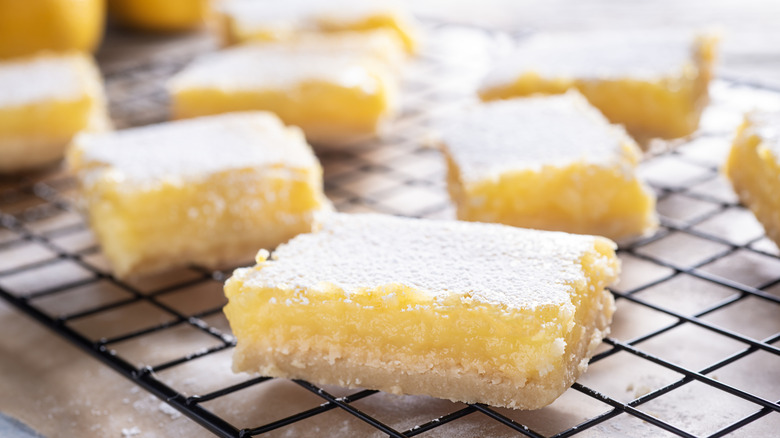Why Powdered Sugar Tastes Metallic And How To Fix It
Powdered sugar, or confectioners' sugar, is among the most common baking ingredients out there, but it's especially popular in America. Made of pulverized granulated sugar and a starch to prevent caking (usually cornstarch), it's the central ingredient in American buttercreams and frostings, and a tablespoon of it is even the baking ingredient you need for the crispiest fried chicken. However, it can taste a little metallic. While it only takes two ingredients to make your own powdered sugar, one of them in particular is the culprit: cornstarch.
On its own and at room temperature, cornstarch doesn't taste very good — it's chalky and has a weird texture. In powdered sugar, though, it's essential. When pulverized to make powdered sugar, granulated sugar can become so fine that it sticks together. With the addition of cornstarch (1 tablespoon of cornstarch for every cup of granulated sugar), the sugar is unable to retain moisture and therefore clump.
Cornstarch is famous for thickening liquids and being able to hold moisture, but the temperature at which it's used makes all the difference. Only when it reaches around 200 degrees Fahrenheit is cornstarch actually able to absorb liquids and break down. Unfortunately, the dusting of confectioners' sugar over your French toast or cup in your icing are "raw." Even though powdered sugar is only about 3% cornstarch, that weird flavor can still be noticeable when it's not cooked, unless you switch to organic powdered sugar.
Pros and cons of organic powdered sugar
Don't let the word "organic" fool you — organic powdered sugar could very well be a completely different product because it uses tapioca starch instead of cornstarch. Why the switch? Because while organic cornstarch is more expensive, organic tapioca is not. And it's a good thing, too — tapioca gives the superfine, granulated sugar a caramel — not metallic — flavor and a slightly warmer color.
Tapioca also absorbs moisture more quickly, meaning the icing (which is really just powdered sugar, cream or milk, vanilla extract, and a pinch of salt, plus butter or cream cheese if you're making frosting) it yields is more creamy. Overall, the difference between conventional and organic powdered sugar matters based on how you're using it. Because tapioca starch is more hygroscopic than cornstarch, its ability to absorb moisture more quickly makes it unable to stand up to certain desserts like lemon bars. According to renowned pastry chef Stella Parks in a Serious Eats article, a freshly sprinkled organic powdered sugar garnish will melt into the lemon curd after about half an hour.
Where organic powdered sugar can really shine is when it's incorporated into frostings and icings. If you can't find it, don't want to make it at home, or just want to try something new, experiment with a French, Italian, or Swiss buttercream instead. Made from sugar syrup (from granulated, not confectioners', sugar), each of these buttercreams calls for a different ratio of sugar to butter and requires a little more finesse, but their taste and texture are well worth it.

